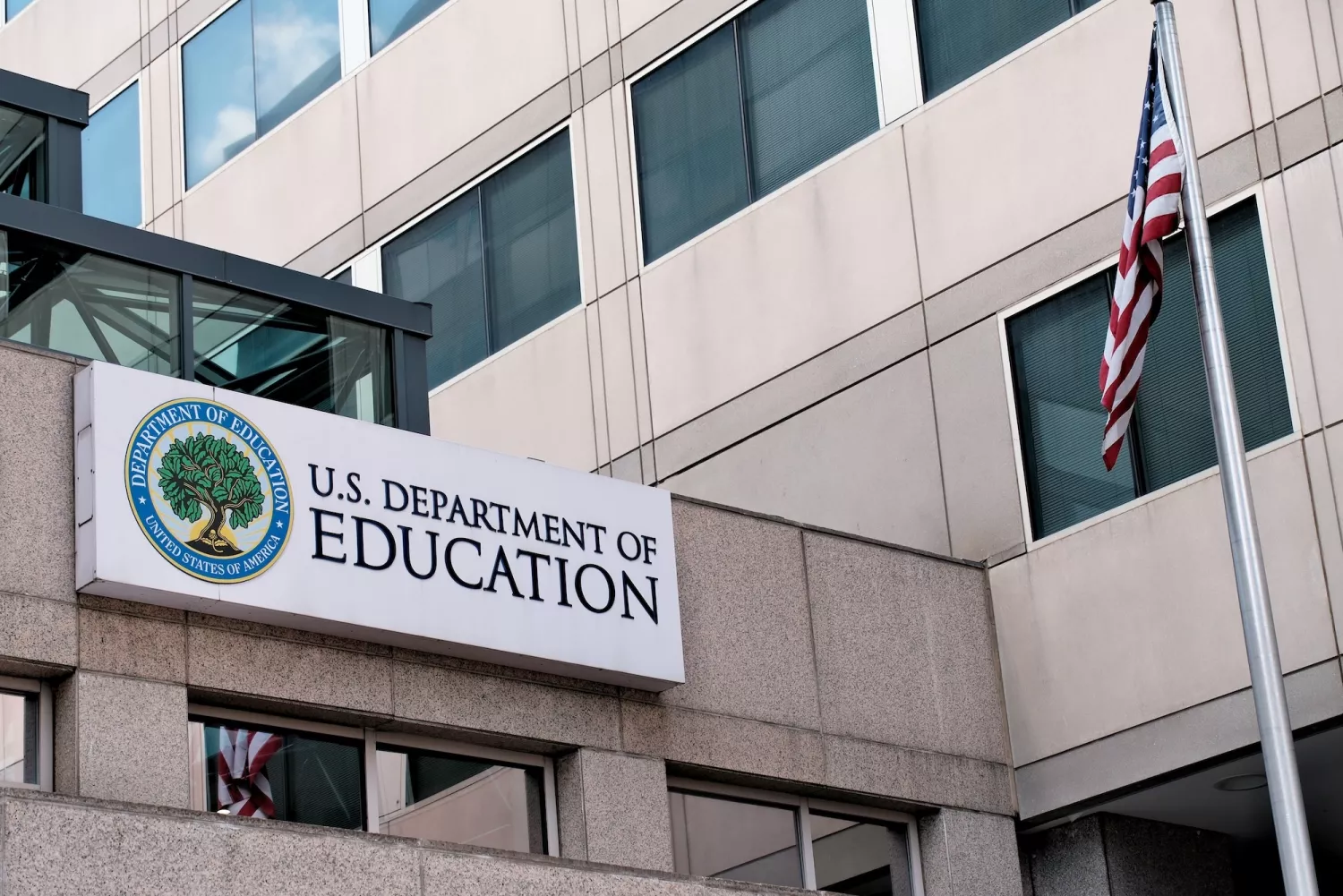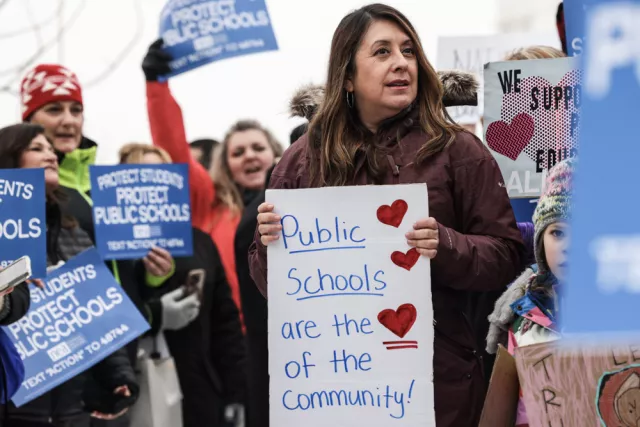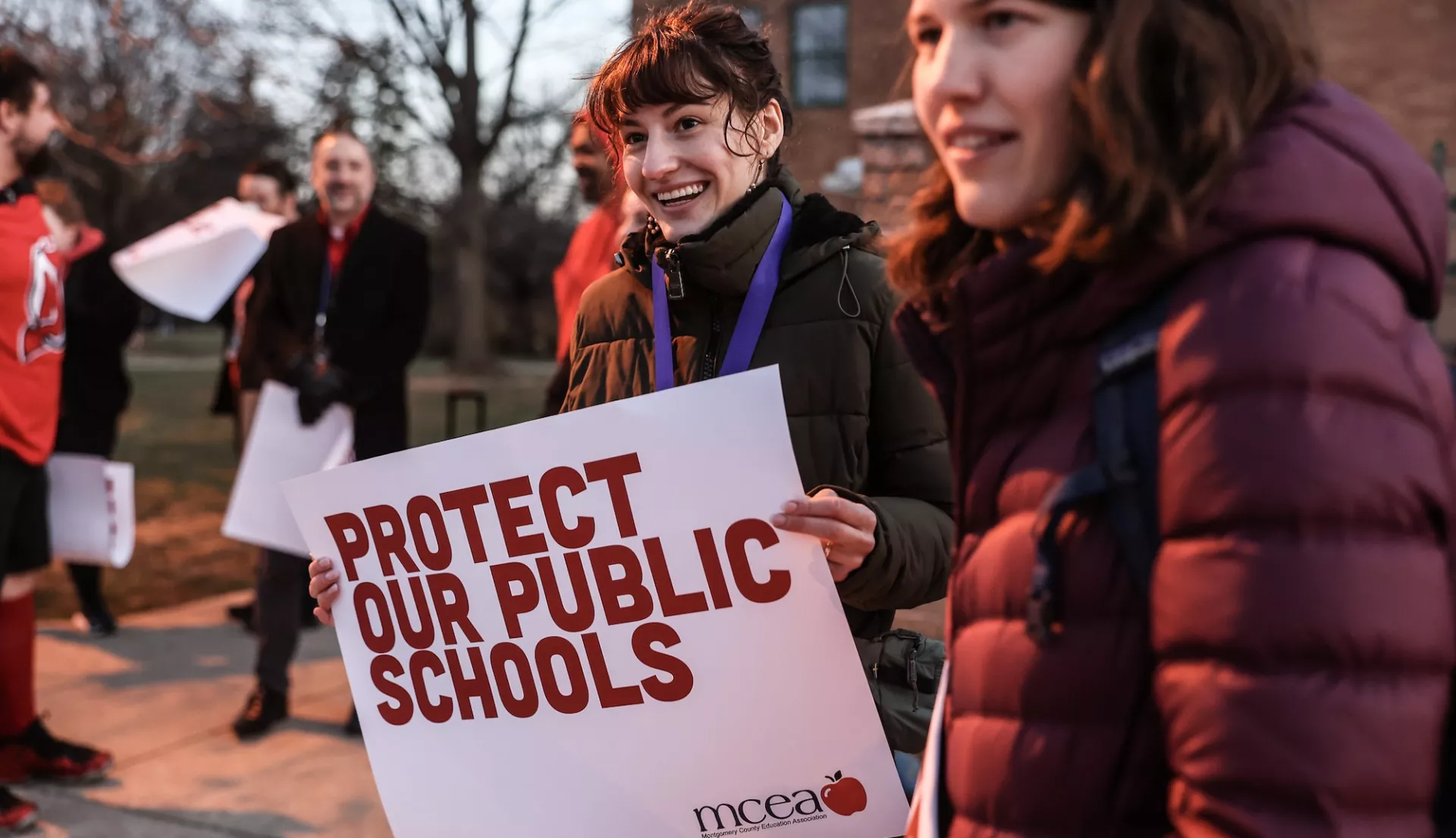Key Takeaways
- Last March, President Donald Trump issued an executive order to abolish the U.S. Department of Education (ED). Because only Congress has the authority to eliminate the department, the White House has taken several major steps to drain ED of its resources. In November, it announced its intention to shift multiple functions to other federal agencies.
- Stripping the department of its resources and mission would be catastrophic for the millions of students in low-income communities who need educational services and support. Civil rights protections against discrimination based on race, gender, and disability would also be gutted.
- The American people do not support these actions, said NEA President Becky Pringle, and educators, parents and other allies will continue to organize, advocate, and mobilize so that all students have well-resourced schools.
On March 20, President Donald Trump signed an executive order to dismantle the U.S. Department of Education, (ED) while also urging Congress to abolish it outright. Eliminating the department, which was established by President Jimmy Carter and Congress in 1980, due to the advocacy of NEA and others, has been a key focus of Trump’s anti-public education rhetoric, as a candidate and now as president.
Over the course of the year, the White House has issued reckless, destructive, and even illegal directives to destabilize public schools and target some of our most vulnerable students. They include stripping schools of critical funding, launching national school voucher programs, providing more funding and less oversight for private charter operators, and greenlighting Immigration and Customs Enforcement (ICE) raids on public schools.
In November, the Trump administration announced it was transferring several key ED responsibilities to other federal agencies.
The agenda is clear: take a wrecking ball to public schools—inflicting damage on millions of low-income students across the country in the process—to pay for tax handouts for billionaires.
Ninety percent of U.S. students and 95% of students with disabilities learn in our public schools. Students across the country benefit from programs run by the Department of Education. Gutting the department, National Education Association President Becky Pringle said, would mean less resources for our most vulnerable students, larger class sizes, fewer special education services for students with disabilities, and less civil rights protections.
“Americans did not vote for, and do not support,” she added, “ending the federal government’s commitment to ensuring equal educational opportunities for every child.”
Calls to Abolish the Education Department
Ever since its creation, the Department of Education has faced continued calls from right-wing politicians for its abolishment, but the current White House presents the gravest threat yet.
The plan to close the department was a part of the GOP campaign platform and was laid out explicitly in Project 2025, a policy blueprint published by the Heritage Foundation to guide a second Trump presidency. Indeed, the very first sentence of the education section of the Project 2025 manual is: “Federal education policy should be limited and, ultimately, the federal Department of Education should be eliminated.”

Doing so, however, requires an act of Congress. And bipartisan support for a strong federal role in ensuring a quality education for all students has in the past defeated these efforts. Just last year, the U.S. House of Representatives considered and rejected an amendment to a bill that sought to eliminate the department. More than 60 Republican members joined Democrats in turning back the effort. However, a new bill was introduced in the House last week calling for the elimination of the department by the end of 2026.
While officially closing the doors of the Education Department may prove difficult, dismantling its key functions and stripping its funds can have the same destructive effect. Soon after taking office, the administration began weighing a series of executive orders that would abolish programs that are not “explicitly in the department’s statute” and transfer other functions to other federal departments—or, in effect, gutting the Education Department without technically closing it.
On November 18, the White House followed through on this threat, announcing its intention to shift six department offices to four other agencies. Under the plan, the Office of Elementary and Secondary Education and Office of Postsecondary Education, two of the agency's largest units, would be transferred to the Department of Labor, and the Office of Indian Education would move to the Department of the Interior. Additionally, a child care access and foreign medical program moves to the Department of Health and Human Services, and a foreign language education program shifts to the Department of State.
How Students and Families Will Pay the Price
The White House likes to argue that abolishing the Department of Education is necessary to “return power to the states.” States already control most of public education, but promoting the myth of federal tyranny is a way to obscure the fact that students—especially lower-income students in rural, suburban, and urban communities and students with disabilities—are going to lose big.
The Department of Education is a critical champion in enforcing federal statutes prohibiting discrimination and ensuring every student has access to an education that will help them reach their full potential. Dismantling it means defunding programs that feed, educate, and protect our most vulnerable and underserved students, and leaving many families fearful and anxious and communities reeling.
Here are the key programs that would be impacted:
- Title 1, which directs money to schools with high concentrations of students living in poverty and provides supports such as reading specialists and smaller class sizes, could be decimated if, as proposed in Project 2025, it is turned into block grants and handed over to individual states—without any sort of accountability or oversight. According to an analysis by the Center for American Progress, 180,000 teaching positions could be lost, affecting 2.8 million students in low-income communities.
- Roughly 7.5 million students, or 15 percent of the student population, receive special education under the Individuals with Disabilities Education Act (IDEA), which provides $15 billion to support students with disabilities. This program could be transferred to another agency, making it significantly less likely that students with disabilities receive the services and support they need and deserve.
- Many expect the White House to move the Education Department’s Office for Civil Rights to the Department of Justice, a move that would severely weaken its ability to protect students against discrimination based on race, gender, and disability. The absence of strong federal oversight would leave millions of students vulnerable to discrimination, leading to lower levels of motivation and academic achievement and a higher risk of dropping out.
- The Education Department also administers Pell Grants, federal student loans, and loan repayment and forgiveness programs. Thirty percent of U.S. college students rely on these federal loans to pay their tuition. Students and families could lose this support, leading to more students dropping out, fewer choices, and fewer options for families.
‘Educators Won’t Be Silent’
By stripping the Department of Education of resources and authority, the White House and its allies would be able to turbocharge key tenets of the extremist anti-public education agenda already being implemented at the state level in many parts of the country. Private school vouchers are at the top of this list.
“The intent is clear,” said Pringle. “Starve our public schools of the resources our students need and funnel these resources to discriminatory and unaccountable private schools or tax cuts for billionaires who funded his campaign.”
Just last week, Trump signed an executive order designed to drain resources from our public schools through vouchers—a catastrophic idea that, when put directly in front of voters, is resoundingly rejected.
And according to a recent Wall Street Journal poll, more than 60 percent of voters opposed dismantling the Department of Education, with similar majorities supporting prioritizing education funding over tax cuts. Families across the country support strong public schools because they understand students need more opportunities, more resources, and greater protections, not less.
“Educators won’t be silent as anti-public education politicians try to steal opportunities from our students, our families, and our communities across America,” Pringle said. “Together with parents and allies, we will continue to organize, advocate, and mobilize so that all students have well-resourced schools that allow every student to grow into their full brilliance.”






